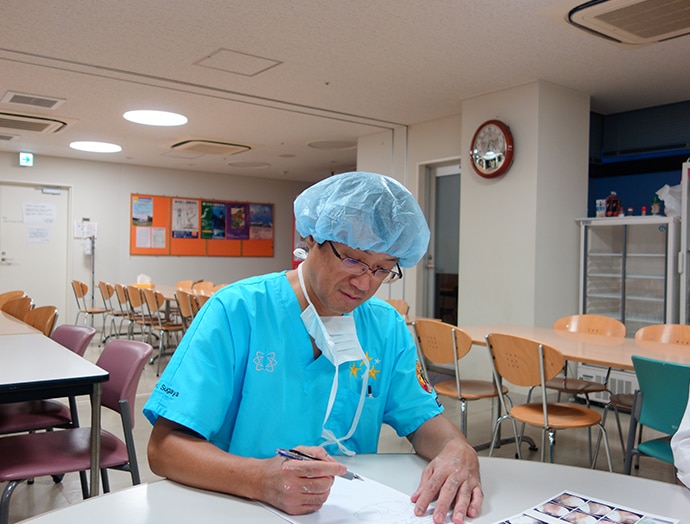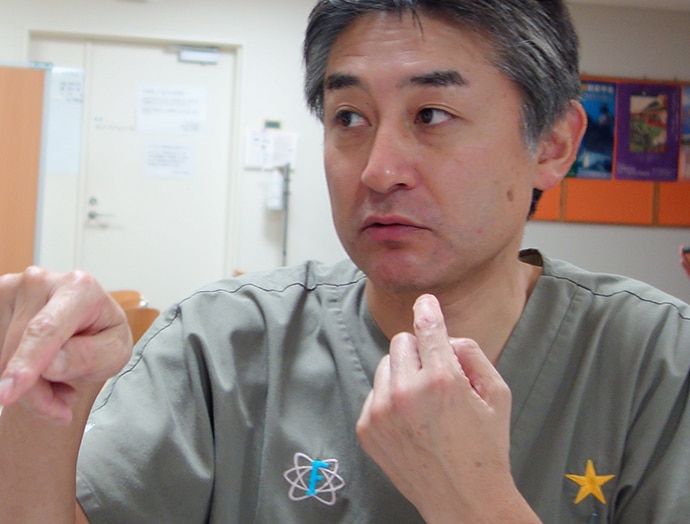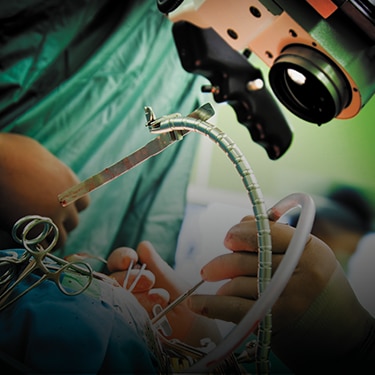4K provides a clearer view for arthroscopy
Hiroyuki Sugaya, M.D. and Norimasa Takahashi, M.D. share their thoughts on using the Sony 4K monitor for arthroscopic surgery.

Tell us about the surgery you performed today
Dr Sugaya: Today’s case involved a cuff tear of a male in his late 70s. His subscapularis muscle was severely torn, as were his supraspinatus muscle and infraspinatus muscle, resulting in tearing that we refer to as a ‘tri-tendon tear’. We reattached the parts that had become separated by inserting screws that now serve as anchors to which tendons were attached.
Dr Takahashi: Today, we treated a teenage athlete who plays contact sports; this person was suffering from recurrent dislocation of the shoulder with a Bankart lesion. We performed a Bankart repair, which uses anchors because of the high risk of recurrent dislocation, and we added the Remplissage procedure to the surgery.
What’s most challenging in arthroscopic surgery?
Dr Sugaya: I think that the most difficult thing in arthroscopic surgery is to perceive a sense of depth. In this reparative surgery of a rotator cuff tear which requires substantial time and effort, I think that a sharper monitor image quality would be extremely useful. Of course, when I think about the future or about the training of young doctors, having higher quality images is undoubtedly better.
What are your thoughts on using the 4K monitor for the surgery?
Dr Sugaya: Although items normally look sharp even with a conventional HD monitor it seems, there is an issue that depth direction tends to become blurry as the focus is actually on only a small part. However, with this 4K monitor, I felt there was very little of that and thought it was great. I think the brightness and contrast were sharper and I could gain a sense of depth. Because imaging technology is evolving at a faster pace than in the past, I feel that the 4K monitors we have now are the most highly evolved.
Dr Takahashi: The images seemed to be more vivid and sharp. We thought the images were very different than from the monitors we usually use, when we looked inside the joint and some larger areas. In particular, as we approached the large space above the rotator cuff, we could see what was happening deep inside and felt that we had a much better sense of distance and depth. These sharp 4K images allowed me to insert anchors easier and more accurately than usual.
I was also stunned that I could see the bleeding from very thin blood vessels. I usually stop the blood at bleeding points by gut feel but, in today’s operation, I could actually see the damaged ends of blood vessels. This may be because of 4K. I really felt the difference in image quality between the 4K and HD monitor.
Why Sony 4K monitors?
Offering four times the pixel count of Full HD, the LMD-X310MD provides a clearer view of fine details than conventional medical monitors. Its increased resolution also maintains picture quality when viewing zoomed images, as well as supporting multiple picture display modes for enhanced operability in the OR. It is ideal for use with a wide range of medical imaging systems such as surgical endoscopes and laparoscopic camera systems.
*Its effectiveness in clinical situations has not been verified. The comments in this article do not guarantee the outcome of using a 4K monitor.
Profile
Hiroyuki Sugaya, M.D.
Chairman, Funabashi Orthopaedic Sports Medicine and Joint Center, Japan
A global leader in arthroscopic surgery, he actively performs overseas lectures and live surgeries, and has performed numerous surgeries on major league baseball players and Olympic athletes.

Norimasa Takahashi, M.D.
Director, Shoulder and Elbow Service, Funabashi Orthopaedic Sports Medicine and Joint Center, Japan
An expert in treating shoulder and elbow joints, he has performed numerous operations and is highly experienced in sports medicine with a reputation for operations addressing a range of symptoms and sports.



